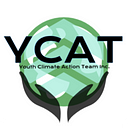Ice Shelf Collapse: What It Means for Us
Ice shelves are vast platforms that form when an ice sheet or glacier falls down to a shoreline and directly onto a water surface. Ice shelves are pivotal as they are important barriers that stop ice sheets and glaciers on land from melting into the ocean. Some common places where ice shelves are found are Antarctica, Greenland, Northern Canada, and the Russian Arctic. However, with the increasing threat of global warming, ice shelves are at risk for collapsing.
The collapse of an ice shelf is in response to long-term environmental changes, such as greenhouse gases, meltwater, and climate change. If greenhouse gas emissions increase, oceans are projected to rise by two meters by 2100 according to recent analyses. Furthermore, the melting of Antarctic ice shelves may double in the next 35 years and lead to a shelf collapse by the end of the century if fossil fuel consumption continues to rise at its current rate.
An ice shelf collapse affects the environment in a variety of ways, such as higher sea levels. Water expands as it warms up, so sea levels rise due to ocean warming. Additionally, sea levels can increase because of land-based glacier melting and oceanic runoff. As a result, humans are significantly impacted by rising sea levels since it can cause erosion, floods, and population displacement.
“When a shelf collapses, there tends to be an increase in the ice that flows from the land into the ocean, which leads to sea level rise — a phenomenon that threatens coastal communities around the world,” according to CNN.
Because ice shelves play an important role in maintaining the stability of ice sheets, it is important to reduce the amount of fossil fuel and greenhouse gas emissions so that collapses can be prevented and sea levels do not rise.
